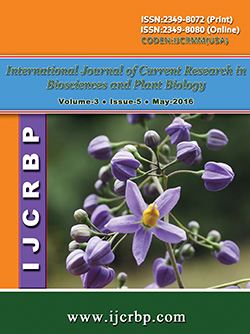 |
Online ISSN : 2349-8080 Issues : 12 per year Publisher : Excellent Publishers Email : editorinchiefijcrbp@gmail.com |
2Plant Protection, Faculty of Agriculture, Hasanuddin University, Makassar, South Sulawesi, 90425 Indonesia
Pebrine disease caused by Nosema bombycis is a detrimental disease of Bombyx mori and a serious limiting factor in sericulture industry that can even thwart the cocoon harvest. This study aims to determine the infectivity of two isolates of N. bombycis from two different seed sources (locally produced, PebLok and imported seeds, PebCin) in South Sulawesi. Spore suspension of N. bombycis (1 × 108 spores/ml aquadest) was evenly smeared on mulberry leaf surfaces. Early third and fourth larval instars of B. mori were fed with the smeared leaves. Insect mortality and symptom development were observed every 24 hr. Research results show that PebCin and PebLok were more infective at instar 3 and instar 4, respectively, although virulence of both isolates were relatively equal with cumulative mortality of more than 60%. Infection of both isolates caused a longer period of larval development for more than 10 days compared to uninfected larvae which was related to increased duration for each instar.
